Pocket Option Best Trading Strategy
Short-term trading is a strategy that aims to open and close positions within a short timeframe, usually days or weeks, although it can be even shorter Pocket Option Withdrawal Time . This type of trading strategy is particularly popular with retail and institutional traders that hope to profit from small price movements and short-term trends.
Does pocket money really work? The Pocket Money app is indeed real and not fake . It is a legitimate mobile application that helps users track their expenses , set budgets , and manage their finances . The app has been featured in various reputable publications and has received positive reviews from users .
Can I have two Pocket Option accounts? This review will closely examine Pocket Option, its features, and its account registration options. Please note that Pocket Option's rules prohibit individuals from registering multiple accounts. Each person is allowed only one account and must use real user data during the registration process.
In general, short-term trading is a more speculative method of trading in comparison with traditional investment methods. This article will discuss a variety of short-term trading strategies, such as scalping, intraday and swing trading, and how you can start short-term trading on our online platform, along with any associated costs and risks.
See inside our platformGet tight spreads, no hidden fees and access to 10,000+ instruments.
Includes free demo account Quick link to content:Introduction Pocket Option Best Trading Strategy
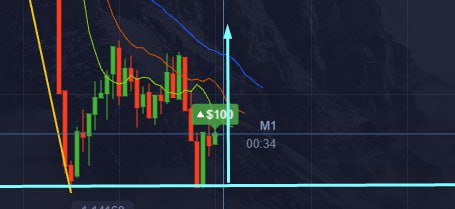
Short-term trading focuses on the fluctuating price action of a financial instrument for quick profits, whereas long-term trading focuses on more fundamental aspects and aims to make steady returns over a longer timeframe. Therefore, short-term trading is seen as a more speculative investment type rather than a traditional buy and hold approach.
Trading on a short-term basis often involves using derivative products, such as spread bets and CFDs. These allow you to open a buy or sell position based on whether you think that the asset’s price will rise or fall, and you will then make profits or losses depending on which direction the market heads in. Short-term trading on our platform also requires you to trade with leverage, which gives better exposure to the financial instruments but comes with many risks. If the market becomes volatile and you make a loss, it will be based on the full value of the position, regardless of your margin percentage. This means that you could lose more than 5x the amount of your deposit.
There are benefits to both short-term and long-term trading strategies. While there is a better variety of options to trade in the short-term, leverage and margin come with many risks. Therefore, some investors prefer a long-term buy and hold approach, where they must pay the full value of the position upfront and take ownership of the asset, whether it be a share, commodity, currency pair, treasury or index. Position trading is another option if you want to use a long-term trading strategy using derivative products.
Choosing to trade in the short-term or long-term depends on a number of things, including your overall trading goals, the amount of capital that you are willing to spend or risk, and your personality type. These can all have an effect on the outcome of your positions.
Short-term trading strategies
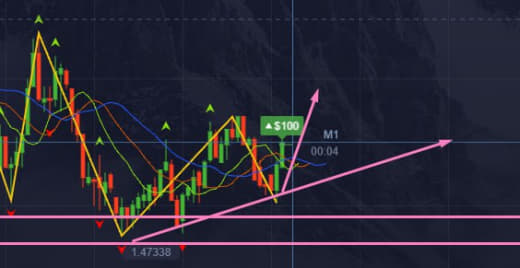
Scalping
Scalping is an extreme short-term strategy, where traders aim to enter and exit positions in a matter of seconds or minutes. Scalpers often carry out hundreds of transactions on an average trading day in an attempt to make a significant profit.
Traders that use scalping strategies focus on price action and technical analysis only and ignore any elements of fundamental analysis. This short-term strategy is often used for the forex and commodities markets, as certain currency pairs such as EUR/USD and EUR/GBP, and commodities such as Brent and WTI crude oil, can experience rapid price movements on a daily basis. Scalpers also tend to ignore even short-term trends within the financial markets, as these do not have time to materialise before a trade is completed.
As scalpers are carrying out a substantially larger number of transactions than a day trader or swing trader, for example, the risks of trading are magnified. This is because there is even more chance that the trades will be unsuccessful and you will have to pay the losses, even if the stake or position is smaller.
Read more about scalping strategies >
Day trading
Day trading is possibly the most popular short-term trading strategy that can be used for any asset class or financial market. Day traders will buy and sell multiple instruments throughout the day with the aim of closing out positions before the market shuts. This means that they do not carry positions overnight, in turn, avoiding overnight fees.
Day trading creates a balance between an extreme short-term strategy, like scalping, and a longer-term strategy such as swing trading. These types of traders could use hourly charts to analyse price data and spot recent emerging or declining trends in order to decide whether to buy or sell a financial instrument. Once they see that their chosen market is moving in an unfavourable direction, they can exit the position quickly to avoid losses.
Day traders have slightly more time to assess their trades than scalpers, slightly lowering the level of risk. They can study price charts to identify the previous day’s highs and lows, which can then help to build an effective strategy for the current trading day. Day traders also avoid the risk of gapping and slippage on price charts, which pose a threat for any positions that are carried overnight.
Swing trading
Swing trading is a short to medium-term strategy, where traders hold open positions for a number of days or weeks. As implied by its name, traders may examine the swing highs and swing lows of an asset’s price in order to assess whether it has upcoming potential for profit.
This strategy involves a lot of forward thinking and prediction. Swing traders aim to predict when and where the price is likely to move next before entering the position, and then ride the ups and downs of the asset. They may only close the position when it does not seem to be following the same pattern anymore. This is a particularly popular strategy for stocks.
Whereas the previous two short-term strategies focus more on technical analysis and price action, swing trading encompasses both technical and fundamental analysis. This is because traders should have knowledge of economic indicators and events that may have an effect on the financial markets, which could cause their position to rise or drop at any time throughout the trade.
Short-term trend trading
Trend trading can apply to both short-term and long-term trading strategies. In this case, a short-term trend trading strategy would focus on trends that materialise on price charts for a matter of minutes, hours or days, but may not exceed past this time.
A short-term trend following strategy is based on the expectation that an asset’s price will continue in its headed direction and will not reverse for the time that you have the position open for. Traders would typically look to buy an asset (go long) if it is seeing an upward trend, or sell the asset (go short) if it is seeing a downward trend.
Traders on our platform can use trendlines , which make up part of our draw tools, to help identify trends that may be emerging or reversing on a price chart. These can also help to spot breakouts from a trend that appeared previously to be steady. Short-term trends can be analysed from a variety of chart timeframes , including by the minute, hourly or daily intervals.
How to short-term trade
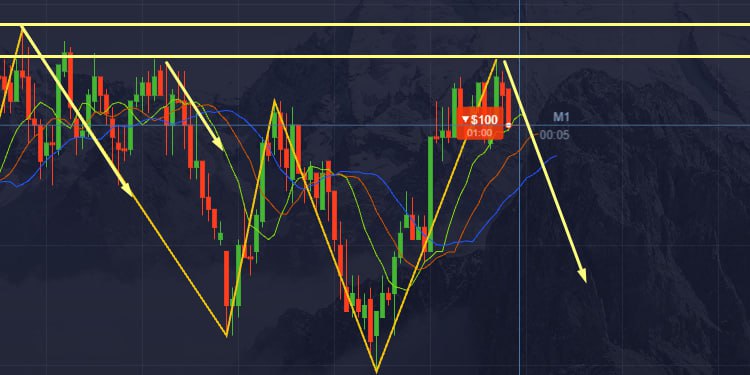
- Open an account. A live account will grant you access to a demo account first, where you can practise short-term trading with virtual funds.
- Pick your product between spread betting vs CFDs. Spread betting is our most popular derivative and allows you to trade tax-free* in the UK.
- Browse our range of financial markets. We offer over 10,000 financial instruments within the forex, share, commodity, index and treasury markets.
- Decide on a short-term trading strategy. Popular choices include scalping, day trading and swing trading, where each have their own benefits and risks. Other notable strategies include momentum trading , reversals and breakouts.
- Brush up your knowledge of technical analysis. Chart patterns, technical indicators and support and resistance levels can come in handy when studying price data.
- Apply risk-management controls. Stop-loss orders, especially GSLOs, can be helpful to control losses when trading in volatile markets. You should monitor your positions closely throughout the duration of the trade.
Example of short-term forex trading

In this example, we will use a forex scalping strategy to speculate on the price movements of the USD/JPY currency pair. This cross is commonly used in scalping as it is one of the most traded forex pairs in the world, and therefore comes with high liquidity and, at times, volatility.
The below chart shows multiple opportunities for a forex scalper. The candlestick chart has been adjusted to reflect 30-second intervals, which is a common perspective for this type of trader. Buy and sell signals (using our drawing tools) have been added at possible opportune moments to enter and exit the trade.
When the bars are green for a consecutive number, this may be the start of a rapid upward price action, so scalpers could open a buy position in the hope that the price will continue to rise. When the bars start to turn red, this shows a reversal in price action, and scalpers may then decide to short sell the currency pair, in order to avoid losses. Scalpers can repeat this action many times throughout the day to profit from small price movements, which are measured in pips.
Example of short-term stock trading
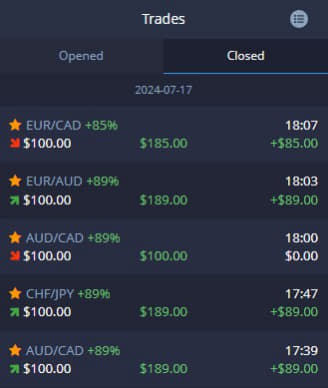
In this example, we will use a day trading strategy to speculate on underlying price movements of Goldman Sachs shares. Day traders need liquidity and volatility, and this is usually offered within the opening hours of the stock market, along with the final hour before close. A popular timeframe to use in day trading is a 15 or 30-minute chart, as this allows traders to analyse price action and also emerging or breakout trends. The below chart has been labelled with possible entry and exit points once again.
As you can see, the uptrend trend for this day is relatively stable. Day traders may open a buy position at the start of the trading day (in this case following US trading hours), and then close out the position in order to avoid carrying it over to the following day.
This tactic is effective for avoiding overnight slippage and gapping on stock charts. As highlighted in yellow above, Goldman Sachs’ share price climbed from $294 to almost $297 between the previous day’s close and the opening price. Then, at the end of the current trading day, the share price dropped overnight from $308 to $303. This means that traders who carry over positions may incur losses by rapid price changes that they may not have anticipated or set a stop-loss for.
Trade your favourite markets in the short-termShort-term trading fees
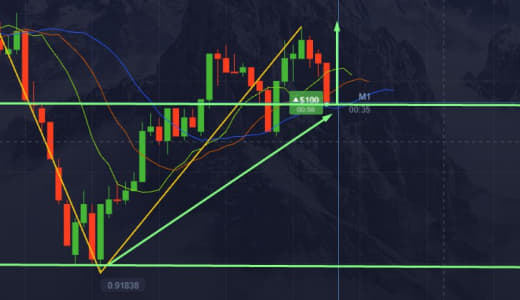
There are a number of fees that should be taken into account when short-term trading on our platform. With margin trading, you only need to pay upfront a fraction of the asset’s full value, which is known as a deposit. This can vary in percentage depending on the asset class. For example, our forex rates start from 3.3% for major currency pairs, which is the lowest margin rate on our platform, and shares start at 20%. The following costs also apply:
- Spreads: these are built into the buy and sell prices of the instrument and will appear on your order ticket when entering values.
- Holding costs: any trades that are carried overnight, for example in swing trading, will result in holding costs. These are calculated at the end of each day and depend on the applicable holding rate for your instrument.
- Commissions: this only applies to share CFDs when you enter and exit a trade. Commission rates vary depending on the country where the specific share is from.
You should ensure that you have sufficient funds to cover all of the above costs in order to avoid an account close-out. Read an overview of our trading costs , which also include stop-loss and market data fees.
Best technical indicators for short-term trading
The best technical indicators for short-term trading strategies usually involve a shorter time period and can help traders to define entry and exit points. Technical indicators should not be solely relied on and should be used in conjunction with other trading tools to achieve the best possible results and analysis, but here are a few examples of effective indicators that are commonly used for short-term trading.
Moving averages
Moving averages can help a trader to identify whether the price of an asset is trending upwards or downwards. A simple moving average (SMA) usually uses a timeframe of around 15-20 days for short-term trends, although this can be adjusted to the timeframe that you want to analyse. If the asset is on trend to rise, the moving average will start to slope upward, so you could take a buy position at its lowest price in the hope that its value will rise. On the other hand, if you are looking to sell and go short on an asset, you could look for a moving average that is declining or flattening. Then, you could sell the asset at its high point and wait for the price to drop before re-purchasing at a lower price, securing a profit.
Relative strength index
The relative strength index (RSI) helps to identify overbought or oversold levels for a security, comparing its relative strength or weakness in comparison with other assets in the market. In general, a reading of 70 indicates that an asset is overbought, while a reading below 30 shows that it has is oversold. The RSI can also introduce buy and sell signals for short-term traders by looking for divergence, failure swings and centreline crossovers on a trading chart. Some traders may buy on a dip when negative momentum is decelerating and sell on a rally when positive momentum is decelerating, for example.
Stochastic oscillator
A stochastic oscillator can be used to decide whether a financial instrument has a good value based on its closing price range over a short period of time. When the stochastic lines are above 80, the indicator signals that the instrument is overbought, which may prompt a trader to sell. When the stochastic lines are below 20, this signals that the instrument is oversold, which may prompt a trader to buy. It can also be used to predict short-term trend reversals as part of a divergence strategy.
Short-term trading software
Our Next Generation online trading platform is specifically designed for short-term traders. Whether you wish to practise scalping, day trading or swing trading, we offer a range of chart types and timeframes to suit your strategy.
The software also comes with an abundance of technical trading tools, including indicators, draw tools, chart pattern scanner, client sentiment tool and other useful features to help you get started. Watch our platform trading tutorials for more information on how to trade with the award-winning Next Generation platform*.
Short-term trading app
Looking to trade on the go with a mobile or tablet device? Our short-term trading app has won awards for Best Mobile/Tablet App and is suitable for both iOS and Android devices. You can monitor open and upcoming positions on our mobile-friendly application. We ensure full order ticket functionality, customisable layouts and adaptable chart types on any screen.
You can also set up price, execution and calendar alerts to appear through SMS, email or push notifications so that you never miss a trading opportunity or piece of market news. Read more about how to set up trading alerts.